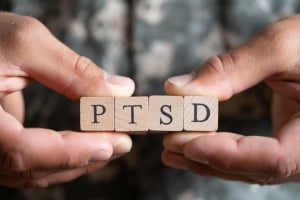Understanding PTSD
 Post-Traumatic Stress Disorder (PTSD) is a mental health condition that can develop after a person experiences or witnesses a traumatic event. PTSD can affect anyone, and its symptoms can significantly impact daily life if left untreated. Recognizing these symptoms early and seeking help are crucial steps toward managing PTSD effectively.
Post-Traumatic Stress Disorder (PTSD) is a mental health condition that can develop after a person experiences or witnesses a traumatic event. PTSD can affect anyone, and its symptoms can significantly impact daily life if left untreated. Recognizing these symptoms early and seeking help are crucial steps toward managing PTSD effectively.
PTSD symptoms can manifest in various ways and typically fall into four main categories:
- Intrusive Memories: Individuals with PTSD often experience recurring, unwanted memories of the traumatic event, including distressing dreams, flashbacks or intense emotional distress when reminded of the event.
- Avoidance: To cope with the memories and emotions associated with the trauma, individuals may actively avoid reminders of the event, including certain places, people, activities or even conversations that might trigger memories of the traumatic experience.
- Negative Changes in Thinking and Mood: PTSD can lead to distorted beliefs about oneself or others, feelings of detachment from loved ones and persistent negative emotions such as guilt, shame, or fear. People with PTSD may also lose interest in activities they once enjoyed and have difficulty experiencing positive emotions.
- Changes in Physical and Emotional Reactions: Individuals with PTSD may become easily startled or frightened, have trouble sleeping or concentrating and may engage in self-destructive behaviors. They may also experience hypervigilance, where they are constantly on edge and alert for signs of danger.
Early detection and intervention are critical for managing PTSD effectively. Several screening tools and diagnostic criteria are used to assess and diagnose PTSD:
- Diagnostic Criteria: According to the Diagnostic and Statistical Manual of Mental Disorders (DSM-5), a person must exhibit specific symptoms that significantly disrupt daily life and functioning for at least one month following a traumatic event to be diagnosed with PTSD.
- Clinical Interviews: Mental health professionals often conduct structured clinical interviews to assess symptoms and determine if they meet the criteria for PTSD, which may include questions about the nature of the traumatic event, current symptoms and their impact.
- Self-Report Questionnaires: Standardized questionnaires can also help screen for PTSD. These questionnaires ask individuals to report on their experiences and feelings over a specific period.
- Observation and Clinical Judgment: PTSD symptoms may be observed by healthcare providers during routine medical appointments or counseling sessions. These observations can contribute to an accurate diagnosis.
Treatment options for PTSD typically include psychotherapy, medication, or a combination of both. Support groups and peer counseling can provide valuable emotional support and validation from others who have experienced similar trauma. Developing healthy coping strategies, such as mindfulness, exercise and maintaining a strong social support network, can also aid in managing PTSD symptoms and improving overall well-being.
If you or someone you know is possibly struggling with PTSD, reach out to a healthcare professional to set up an appointment. Talking to a healthcare professional will help you determine next steps and create a long-term care plan.
Photo: ©iStock.com/AndreyPopov